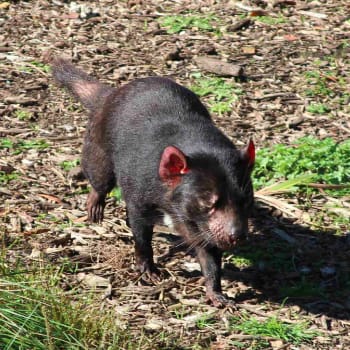
Read the Charter of Independence here.

By MATTHEW SIMS
A master plan by Zoos Victoria to save 20 species over 10 years seems like a step in the right direction, but experts say low government funding means a more rational approach is needed.
Australian wildlife is on the brink of being halved in number over the next century if drastic improvements in conservation efforts are not made immediately.

One of Victoria’s landmark species, the Leadbeater’s possum was declared critically endangered following a recent media release from Environment Minister Greg Hunt last month.
Only 40 Leadbeater’s possums remain in the wild after the majority of their habitat was burnt during the 2009 Black Saturday fires.
This possum is only one of the 20 Australian native species that are the focus of Zoos Victoria’s 2014-2019 Wildlife Conservation Master Plan.
Zoos Victoria wildlife conservation officer Ben Sanders said they wouldn’t allow another Victorian vertebrate to die out.
“We believe all species alive today are not beyond human assistance and that each and every species is worth fighting for,” Mr Sanders said.
“As a wealthy nation, with some of the most unique and irreplaceable wildlife on the planet, giving up on our species should never be considered an option.”
The plan requires significant financial investment to succeed, with approximately $30 million in government or private funding needed on top of the $1.6 million of donations and $10 million from Zoos Victoria’s own budget.
The four-year management plan for the Leadbeater’s possum will cost $4.27 million alone.

Threatened Species Recovery Hub director Professor Hugh Possingham said current funding for animal conservation was not even close to being enough.
“The federal [animal conservation] department’s entire budget is what the defence department spends in two weeks,” Prof Possingham said.
“If we cannot get an improvement, we are set to lose, I would say, anywhere between 30 to 50 percent of every species in the entire country over the next 100-200 years.
“We have worked out that for threatened species, if we had another $200 million a year invested in on-ground action, it will arrest that decline and get it back to normal.”
Victorian Advocates for Animals president Lawrence Pope said the $30 million of government funding should be the bare minimum support for Australian wildlife.
“Thirty million is very small potatoes to save even a single species or to even give them a chance,” Mr Pope said.
“I think it is time we got fair dinkum.”
Talk about further funding for animal conservation has led some experts to suggest Zoos Victoria should be analysing the cost effectiveness of animal preservation.
Prof Possingham believes Australia should adopt a proactive plan that is more reflective of the war strategy "triage".
The principle of "triage" states that the maximum amount of life should be saved using the least amount of resources.
Australia would therefore have to make a difficult decision between postponing the inevitable extinction of a select few species, and saving thousands of native animals forever.
“That is the kind of issue that a proper prioritisation project can deal with and find a rational solution,” Mr Possingham said.
Mr Sanders said conservation efforts need to be increased and improved if Australia has any chance of maintaining its diverse ecosystems.
“What the conservation landscape needs is strategy, innovation and real investment to ensure that each and every species has the opportunity of a future,” he said.
Wildlife Preservation Society of Australia chief executive officer Patrick Medway said more needs to be done about the underlying cause of animal extinction.
“Many species are threatened by habitat destruction and agencies often circumvent their responsibilities of protecting the habitat for wildlife,” Mr Medway said.
“From extensive research, it is clear that habitat conservation along with removal of feral predators combined with good land management of the national parks system will help preserve our native wildlife in all its forms.”
Mr Possingham said each animal is different and the process needed to rehabilitate them is not just dependent on funding.
He said some animals may not be able to prosper again in the wild and Australia may have to consider captive breeding as a viable option for the survival of some endangered species.
“Society has to answer the question – how happy are they if a species only lives in a zoo?
“If I asked you, I am going to give you enough money to save two species of animal in the wild or none in the wild and 10 in a zoo, what do you want to do?”
ANIMALS ON THE ZOO'S LIST

Mammals
Eastern barred bandicoot
Mountain pygmy-possum
Tasmanian devil
Smoky mouse
Leadbeater’s possum Helmeted honeyeater
New Holland mouse
Brush-tailed rock-wallaby
Eastern quoll
Southern bent-wing bat
Birds
Regent honeyeater
Orange-bellied parrot
Amphibians and Reptiles
Southern corroboree frog
Northern corroboree frog
Baw Baw frog
Spotted tree frog
Grassland earless dragon
Stuttering frog
Guthega skink and alpine she-oak skink
Insects
Lord Howe Island stick insect